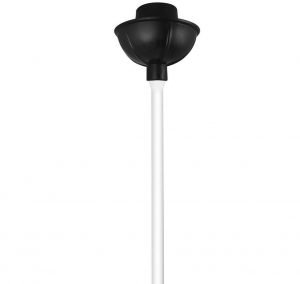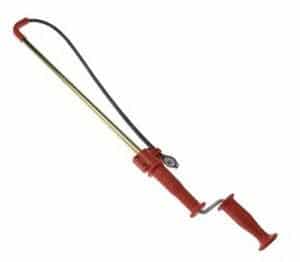Why You Shouldn’t Use Drano in Toilets – Do This Instead
Last Updated on August 1, 2023 by toilethaven
Can Drano be used to Unclog a Toilet?
Drano is an effective drain cleaner, but should you use it to unclog a toilet? Why is a toilet drain different from other drains? And what liquids should you use to unclog a toilet?
A toilet is clogged when things that should not be flushed end up being flushed. These include toys, baby wipes, baby diapers, feminine sanitary products, and dental floss. It could also be a result of a full septic tank backing up.
On the other hand, bathtubs and sink clogs are caused by soap scum, hair, waste food, cooking grease, etc. Drano has been used to unclog kitchen sink and bathtub drains successfully for many years, but can it be used in a toilet?
Drano should never be used to unclog a toilet because its active ingredients (caustic and bleach) work by breaking down the clog, emitting heat in the process. The heat produced may crack the toilet, soften PVC pipes or weaken steel drainpipes. The solution produced can also badly irritate the skin.
The best alternative to Drano for your toilet and other drains is enzyme-based drain cleaners. They are effective, septic-safe, eco-friendly, and safe for your plumbing.
SC Johnson, the company that manufactures Drano, has also advised homeowners against using their product to try and unclog toilets. Instead, they advise that you use their other product, Drano Max Build-Up Remover.
The Drano Max Build-Up Remover is, however, more preventive than curative. It is used to prevent drains (sinks, showers, and tubs) from clogging, but if you have a slow-draining toilet, you can use it to break up the partial clog.
What Happens If You Put Drano In the Toilet?

Drano works by eating away drain clogs so that they are easily washed down. The active ingredients are caustic and bleach. As the Drano acts on the clogs, a substantial amount of heat is produced. This a problem for both the homeowner and the toilet.
A toilet has an S-shaped part at the bottom called a trap. The toilet trap is what brings about the siphoning effect and therefore flushing, and it also holds a small amount of water to prevent sewer gases from coming up to the bathroom.
Unlike a sink, the toilet trap is made with the same material as the toilet, which is porcelain. If Drano’s chemical reaction occurs at the toilet trap, the heat produced will cause the toilet to expand and therefore crack.
If, say, you left Drano in your toilet bowl overnight but did not manage to unclog the toilet, you will explore other ways to unclog your toilet. You will reach for either the plunger or the auger.
The danger of doing this is that you risk splashing the Drano on your face or hands. This can result in serious skin irritations or burns. Therefore, using Drano to unclog a toilet is a really bad idea.
Drano is also unforgiving to toilet drainpipes, be they PVC or Metallic. The strong reaction will dissolve and weaken metallic drainpipes while the heat softens and deforms PVC pipes. The risks of using Drano on toilets exceed any benefit that you may derive.
How to Unclog a Toilet without Using Drano.
There are several unclogging a toilet. Some are easy, while some are hard and expensive. If, for instance, you have a bent drainpipe due to tree roots growing towards it, it will take longer to fix and cost even more money.
1. Toilet Plunger

A toilet plunger costs between 10 and 20 dollars and is essential to the bathroom. A bell-shaped plunger is the best plunger to unclog a toilet. Unlike cup-shaped plungers, which are flat and designed for other types of drains, a bell-shaped plunger has a small opening to fit into the toilet outlet completely.
If you have a clogged toilet bowl full of water, do not plunge immediately. Use a cup and a bucket to remove most of the water. Without this, you may end up splashing the water all over your face and bathroom floor.
Once you have drained the toilet bowl, go ahead and plunge the toilet. The first plunge should be gentle enough to attach the plunger to the toilet outlet properly. Proceed to then plunge aggressively. Hopefully, your clog will be pushed down the drain pipe.
If you don’t have a plunger, there are other ways to unclog a toilet. Here is how to unclog a toilet without a plunger.
2. Toilet Auger

A toilet auger which is also called a toilet snake is what you should upgrade to if the plunger fails to unclog your toilet. Toilet augers are 3 to 6 feet in length and work by pulling the clog out or shredding it into smaller pieces that can easily flow down the drainpipe.
Unlike a plunger, a toilet auger acts on the clog directly in the toilet trap or the drainpipe. If the clog is, however, deeper in the drainpipe than the auger can reach, you may decide to call in a plumber or higher a longer motorized auger. These augers can reach up to 100 feet.
You should, however, be careful while using a toilet auger to prevent it from scratching the inside of your toilet bowl. Always guide it into the toilet outlet and pull it out slowly.
If the auger does not manage to unclog the toilet, there is still one more thing that you can do. Here is how to unclog a toilet when nothing works.
What Can You Pour Down a Toilet to Unclog It?
While dealing with a clogged toilet, you should try as much as possible to avoid any chemical. They pose a danger to the user and the environment. Enzyme-based drain cleaners are the only liquids you should consider. They are efficient and safe to use.
If not Drano, some people go ahead and use Muriatic acid to unclog a toilet. Why is this a bad idea? As a rule of thumb, you should always add acid to water while diluting it and never vice versa. What if, by mistake, you or someone else in the house adds water to the acid? An exothermic reaction/explosion will occur, which can burn or even blind you.
With a clogged toilet, there is a chance the acid will sit at the toilet trap and not flow down the drain. If someone flashes the toilet again, a violent reaction will occur, which will eject fluids out of the toilet or even explode and break the toilet.
If you have tried to unclog a toilet on your own without any success, you should probably go ahead and call a professional plumber. Plumbers are more experienced than you and have more sophisticated tools and equipment.